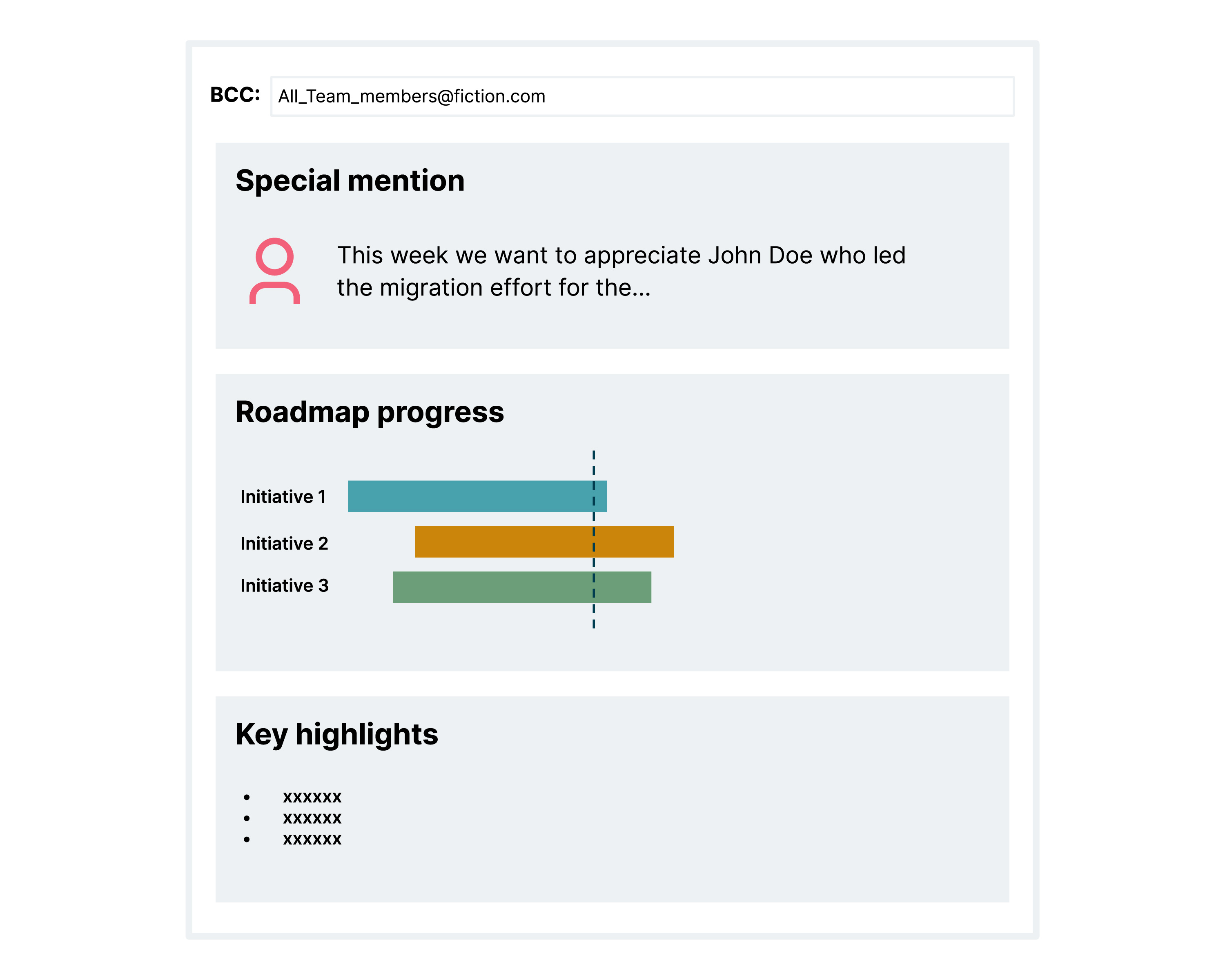Part one of the two-part blog series discussed challenges around team organization, people management and team culture. We continue the series on managing agility at scale and building on our lessons from managing delivery operations. This second part addresses the softer aspects of building a culture and environment that foster a high-performance team.
Transparency for the team
Just as we prioritize transparency for the executive leadership and our consumers, we also need a similar emphasis on transparency for the team that is building the solutions. We must reiterate and re-emphasize the answers to the questions in the table below, in an easy-to-consume format. This practice ensures that the team is always aware of their 'purpose' and driven by the end goals. Sharing program wide information in an easy-to-consume format helps bring the different teams together, as they learn about each other's efforts and relate to the objective in common.
Reinforce and re-emphasize the answers to the following questions for the team |
Forums where we can address these questions |
|
|


*example of a newsletter
Fig 4. A sample weekly dashboard/ communication that helps promote transparency and visibility within the team
Breeding positivity
It’s easy for people and their contributions to get lost in a large team with many moving pieces and this can cause them to feel undervalued and unappreciated. Our recommendation for leaders is to keep your creative juices flowing to find ways in which you can recognize and appreciate contributions – big or small, of your teams and individuals. We have deliberately steered away from using the word 'reward' since rewards can act as momentary motivators only. If you are looking for lasting effects, go with sincere appreciation and recognition.
Alignment on distributed teams - the hard parts
Alignment is probably the hardest to get right , especially if you have teams spread across multiple time zones like the US West and India, where there is barely any agreeable time overlap. If you want to create a culture where the teams have collective ownership and collaborate freely, then the usual solutions of creating separate teams or work allocations start creating silos – the anti-thesis for collaborative work. I must admit that we are still far from an ideal solution that effectively addresses this reality. However, we did try a few things that helped us make some minor improvements in our team members' lives.
Limit the variety of time zones - if you are working with the US West and India, try not to engage people working from other time zones. There is less probability of finding a time that works for everyone
Share the load - we rotated the meeting time for our teams every six months so that it wasn’t just one group whose evenings were consumed throughout the year. So for roughly six months, the India team would take calls during their evening time and for the next six months, they would shift to morning meetings. The shift typically coincided with the start of daylight savings time
Avoid Friday evening catch-ups - unless absolutely necessary, avoid setting up time on Friday evenings. Everyone needs a fair shot at their weekend
Don’t burn on both ends - if you do your stand-ups in the evening, it makes sense to plan the other meetings during the evening as well. Spreading the meetings during evenings and mornings burns the teams at both ends and can lead to quicker burnout
Building high-performance teams requires an undying commitment to the underlying principles of autonomy, mastery and purpose. Providing the team transparency and visibility into the purpose, giving them the flexibility to choose their preferred method of collaboration, enabling them to build on their skills and recognizing their efforts along the way are good starting points.
Coupling the above with initiatives that help improve operational effectiveness like addressing bottlenecks, prioritizing the highest priority items, structuring for effectiveness and greasing the wheels for a better team member experience are highly recommended in high complexity team settings.
If you are also interested in more detailed lessons associated with data mesh implementation and data platform thinking, click here.
Disclaimer: The statements and opinions expressed in this article are those of the author(s) and do not necessarily reflect the positions of Thoughtworks.


















